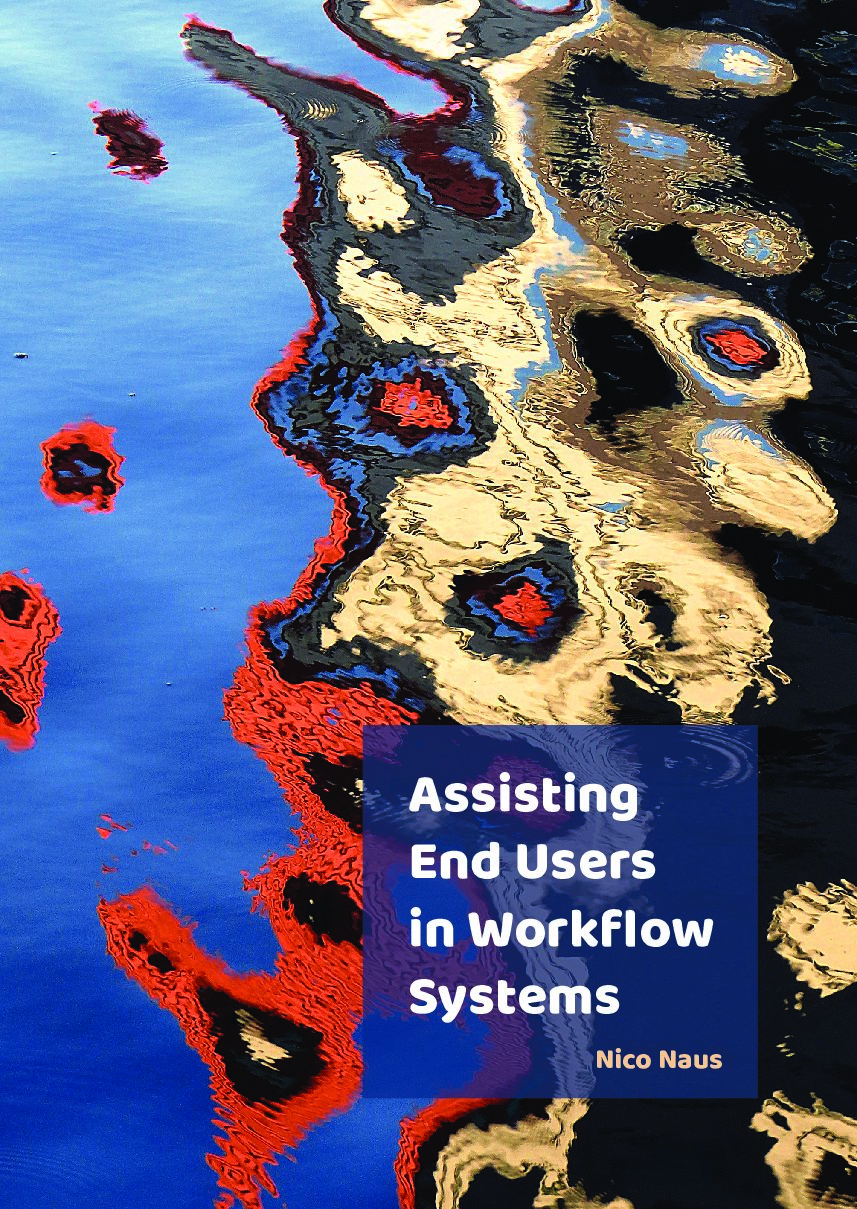Assisting End Users in Workflow Systems
Nico Naus
Promotor: prof. dr. J. Jeuring (UU and OU)
Universiteit van Utrecht
Date: 29 June, 2020
Thesis: PDF

Summary
In today’s society, almost every company and institution employs some kind of workflow automation. Hospitals employ software that automates health care processes. The coastal guard uses workflow software to assist in search and rescue operations. Naval ships use workflow automation software to manage people, resources and mission goals.
Before automation, users knew the process by heart, and knew how their choices influenced the process. Workflow systems hide the flow of processes behind interfaces. For end users, it is not always clear how decisions influence the progress of a task. Another factor in the decision process of an end user is the information available. How can a user be sure that he or she took all information into consideration before reaching a decision? One way to provide users with more information about their current situation is to provide them with next-step hints. These hints are based on their current situation: their position in the workflow and the data in the system. In this dissertation, I attempt to answer the question, how can we provide end users with next-step hints to aid them in making decisions?
The answer to that question is found by applying of techniques from intelligent tutoring systems (ITS) and program analysis. Previous work on ITS strategies inspired the first approach to generate next-step hints. By extending the original program with additional information, it can be viewed as a rule-based problem, making it susceptible to generic AI search and solving algorithms. The second approach comes from program analysis. By employing symbolic execution, next-step hints are automatically calculated, without any changes to the original code.
The application of both techniques results in two next-step hints systems. One system, aided by the programmer, the other fully automatic. In developing the automatic system, a formal Task-oriented Programming semantics is also developed, including a symbolic execution semantics. Both systems are proven to be sound and complete. They are both implemented, too, showing that they work in practice. Providing next-step hints to end users is crucial in improving the quality of decisions.It helps end users by giving insight into the effects of their choices, and makes sure that all data is taken into consideration.